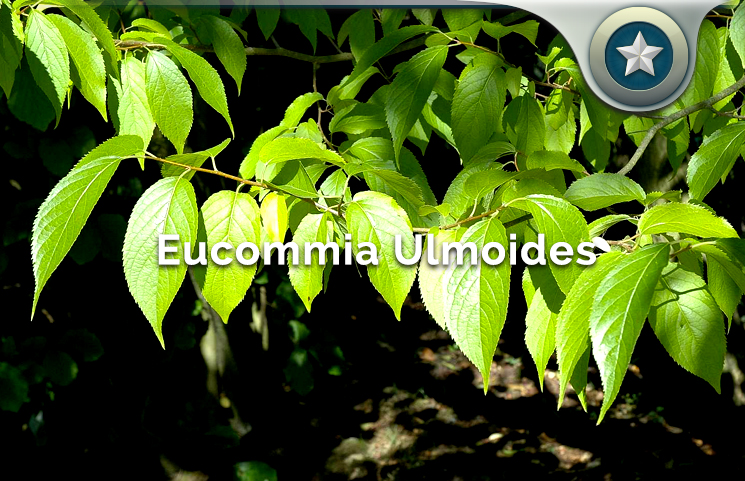Medicinal trends in recent years show that Western medicine is increasingly receptive to the ancient ideas of the Far East. In particular, a growing number of alternative medicine practitioners are turning to some of the less explored ideas of Chinese Medicine as a viable alternative to the oversaturated alternative medicine market in the United States.
In particular, Chinese medicine has always had a strong history of emphasizing the importance of natural remedies, a stark contrast to the mechanized, edited health solutions stressed in the Western World.
Table of Contents
In Ancient Chinese medicine especially, practitioners are often keen on the ideas of their ancestors, many of whom searched far and wide for plants and animals with strong medicinal qualities to use in original medicines and supplements.
Though potential consumers ought to exercise extreme caution when trying new types of flora and should put substantial research behind their every experimental health decision, there is certainly reason to explore the ideas native to Eastern medicine.
In fact, with many medical professionals warning of the dangers an overreliance on prescription drugs can pose, there is a growing camp of American doctors advocating that some patients transition to a more nontraditional medical practices.
In the case of Eucommia Ulmoides, there seems to be a significant following of medical practitioners who advocate that the small plant just might turn out to be the next big medical discovery.
While there is still much to be done in the way of independent research and discovery on the drug, preliminary trials in the Western World look very promising for the medicinal usages of the tree-like flora.

However bright the prospects in the world of herbology and medicine, the plant’s numbers have been steadily dwindling for years. As a result small efforts to maintain Eucommia Ulmoides’s numbers have prevented large-scale explorations of its medicinal benefits in some parts of the world.
Growing up to sixty feet tall and spreading to nearly twenty-five feet on each side, this species of Central Chinese tree is definitely predisposed to offer a large amount of product per sample size. As a result, some postulate that it could offer a somewhat viable solution to a myriad of health and personal issues.
Primarily, the species has been used for centuries in rural China as an anti-inflammatory, and has even been linked to the facilitation of weight loss and serious fat-burning activity. However, much of the studies currently in circulation of the scientific community have been conducted on small samples of animals, rats and mice mostly, and may not be entirely correlated to potential experiences and effects for the average human.
As the world of supplements and alternative medicines continues to grow, it is important that readers begin to differentiate what is fact from what is fib.
Moreover, consumers need to realize that the line between substantiated and unverified information is often blurred, especially in the much unexplored world of alternative medicine.
This guide has been created to begin to better inform potential consumers on the history, uses, side effects, and reality behind Eucommia Ulmoides.
The History And Appearance Of Eucommia Ulmoides
Consumers should understand that the physical composition of a plant is often one of the most important components of their understanding of any given supplement using the plant.
Primarily, understanding how the different parts of a plant or tree are used can save the average user a costly mistake when applying the plant to the problematic area of their body. One curious example that expertly illustrates the importance of distinguishing between physical characteristics is actually the subject of this guide.
Additionally, readers should use the history of their desired supplement to gain a prior understanding of the multiple ways, successful and unsuccessful, that the drug has been used over the course of thousands of years.
This wealth of historical information is especially essential to a consumer’s understanding of an alternative medicine. Because its roots are often so heavily based in hundreds of years of lowly-publicized research and familial usage, the historical applications of an alternative supplement or solution is an invariably important piece of the puzzle for any potential user.

Appearance And Physical Attributes
While the leaves of the Eucommia Ulmoides tree are seldom used for anything once the tree is harvested, its traditional uses almost always come down to some sort of implementation of the bark.
When it comes to manufactured or home remedies, consumers need to be aware that not every part of this tree is safe or largely recommended for human consumption.
Though some parts of rural china may eat select parts of the tree, it is generally only eaten as a facet of its restorative properties. Some practitioners eat smaller parts of the ground leaves, stems, and other typically undesirable parts of the tall tree.
But as a general rule, the bark is regarded as the most integral part for Ulmoides’ alternative medicine applications. Course in texture and dark in color, its application is primarily related to the anti-inflammatory properties native to the tree.
History of Eucommia Ulmoides
Because of its primary uses in Chinese medicine, not much is known about the history of the Ulmoides tree. In fact, a compilation of sources conducted for the purpose of researching this article turned up very little in the way of the elusive plants origins.
However, there are a few important things about the historical application of the plant that remain essential to any individual’s overall understanding of the tree.
However, there seems to be at least a minute amount of information on the internet about the ways the plant has been used in the past. One source details that the species of the plant has been in Chinese medicinal circulation for over 2,000 years and, despite, recent conservation efforts, still finds itself in large danger of extinction if current trends aren’t somehow mitigated.
In any case, the reality of both the history and appearance of this large tree-like plant is wrought with very little information, but much hope. In coming years, the medical industry ought to focus on both conserving and expanding current stocks of the plant, and exploring the possible uses proposed by generations past.

Eucommia Ulmoides Uses
As those well-versed in the ways of Eastern medicine may have already guessed, the possible benefits of Eucommia Ulmoides are plenty, and extend across a wide variety of different areas of health. Despite its wide birth of proposed health benefits, the scientific community still stands divided on the extent to which some of the claims of benefits can be verified.
Put simply, not everything that glitters is gold, especially when it comes to the world of supplements and alternative medicinal treatments.
For the most part, the benefits of Eucommia Ulmoides come down to decreases to aids in fat-burning and decreases to blood pressure and glucose. In all respects, the plant offers Americans an unprecedented combination of potential benefits in a wide variety of important areas.
As a result, consumers who value their overall health but don’t want to jump head-first into the world of drugs and traditional medicinal supplements may consider giving this tree’s bark a shot.
In this section, we will outline some of the most cited and well-regarded benefits that the traditional proponents of this medicinal treatment articulate. Additionally, this guide seeks to articulate the extent to which said benefits are accepted within the medical world.
As always, it is important that potential consumers consider their own research, as well as the opinion of the medical professional closest to their own health, before making an important decision in favor of the drug.
Weight Loss
In our appearance-obsessed society, it is incredibly important that the potential weight-related functions of any alternative medicine be closely examined. Unfortunately, a lack of viable research studies on this drug makes it difficult to provide any in-depth analysis on its viable application to the lives of actual users.
However, there is a silver-lining for the detail-oriented readers interested in the prospects of weight-loss resultant from the ingestion of some bark off of a Eucommia Ulmoides tree.
Primarily, the studies come in the form of animal studies conducted on rats and mice. In one such study, it was found that ingestion of the bark caused a direct increase to the amount of heat production in the body. As a result, some researchers argue that the plant could be incredibly effective in burning fat off of humans that consume its dark wonders.
It is a well-known fact of medicine and physiology that increases to heat often mark the beginning stages of weight loss. As calories in the body are burned during exercise, the body produces heat in order to sweat and cool the body down.
As a result of this understanding, it seems elementary that some scientists could view the increased heat production in a sample of rats as the beginnings of a larger understanding that Eucommia Ulmoides could be the key to alternative weight loss techniques.
Though we still have much to learn about how exactly this ancient medicinal compound helps us lose weight, it is important to note that preliminary trials on animals have yielded a lot to be hopeful for.

Blood Pressure And Glucose Levels
The metabolic benefits of the fast-acting compound aren’t limited to weight. Fortunately for more detail-oriented readers, this proposed benefit happens to have much more scientific fact to back up its claim.
In fact, one double-blind study established sufficient grounds for the claim that the drug can help to lower blood-sugar rates in men and women alike. Naturally, this study, and by extension the drug as a whole, could prove to be of vital importance to the millions of Americans who suffer from diabetes and other metabolic and regulatory diseases.
This study, conducted with a large sample of obese and overweight men and women from several different demographics, found a distinct correlation between ingestion of the Chinese plant and a lowering of sugar levels within the blood of participants.
As a result, there is some evidence that the compound could be used to maintain more health blood-glucose levels for all types of Americans, as well as users worldwide.
The plant could also hold the key to solving another major issue affecting a large portion of the world population: high blood pressure. One preliminary study, using a similar methodology to the one previous, established a direct link between usage of the plant’s bark in small doses and lowered blood pressure.
As a result, some medical professionals are exploring the possibility of using the drug to treat diabetes patients who otherwise would not want to seek recourse in traditional forms of medicine, such as insulin injections.
Though, much like the previous benefit, there is still much work to be done before the plant ought to be integrated into the regular diets of sufferers of all kinds, the studies conducted over the past few years have lent much weight to the belief that high blood pressure and inflated blood glucose levels could be solved using the alternative medicine.

Eucommia Ulmoides Review Summary
The wisdom of alternative medicine practitioners in the Far East has long been recognized as a hidden gem of the medical world. In fact, some alternative medical practitioners in the United States endorse Chinese practices as being the most time-tested and well-protected medical secrets in the history of the industry.
When it comes to Eucommia Ulmoides, the conventional wisdom on unconventional ways of Chinese medicine couldn’t be any more correct. Though there is still much to be explored on the drug’s direct effects on men and women, studies conducted over the past few years have been incredibly helpful in making a name for the drug speaking to both its effectiveness and its potential as an alternative form of treatment.
Though the plant has been placed on the endangered list in the past year, conservation efforts have helped to revive both the physical plant and the hope it provides for millions of consumers all over the world. As efforts to find alternative ways to treat serious health issues continue to ramp up, more and more consumers search for their own ways to solve their own health issues.
Although not all that glitters is gold within the world of alternative medicine, the allure of Eucommia Ulmoides certainly shines bright; hopefully, the light of increased research and development will help to add more conviction to the benefits offered by the large tree and its dark bark.









